Rambam Hilchos Avodas Kochavim Chapter 1
Friday, Aug 14, 11:00am EST
45 min
Rambam Mishneh Torah
- August 14, 2020
- |
- 24 Av 5780
Rabbi YY Jacobson
774 views- 15Comment
- Call-in
Listen to the class on the phone
Call +1 (845) 201-1933
When prompted, dial the ID number below.
7689 MP3 MP4 Source Sheets - Copy Embed
Dedicated by Miriam Weiss, in memory of Shmuel Yosef ben Yechezkel
Class Summary:
This class in Rambam the laws of Avodas Kochavim, chapter one, was presented on Friday Parshas Reah, 24 Av, 5780, August 14, 2020, streaming live from Rabbi Jacobson's home in Monsey, NY
Rambam Mishneh Torah
Rabbi YY Jacobson
- August 14, 2020
- |
- 24 Av 5780
- |
- 774 views
Dedicated by Miriam Weiss, in memory of Shmuel Yosef ben Yechezkel
Related Classes
Please help us continue our work
Sign up to receive latest content by Rabbi YY
Join our WhatsApp Community
Join our WhatsApp Community




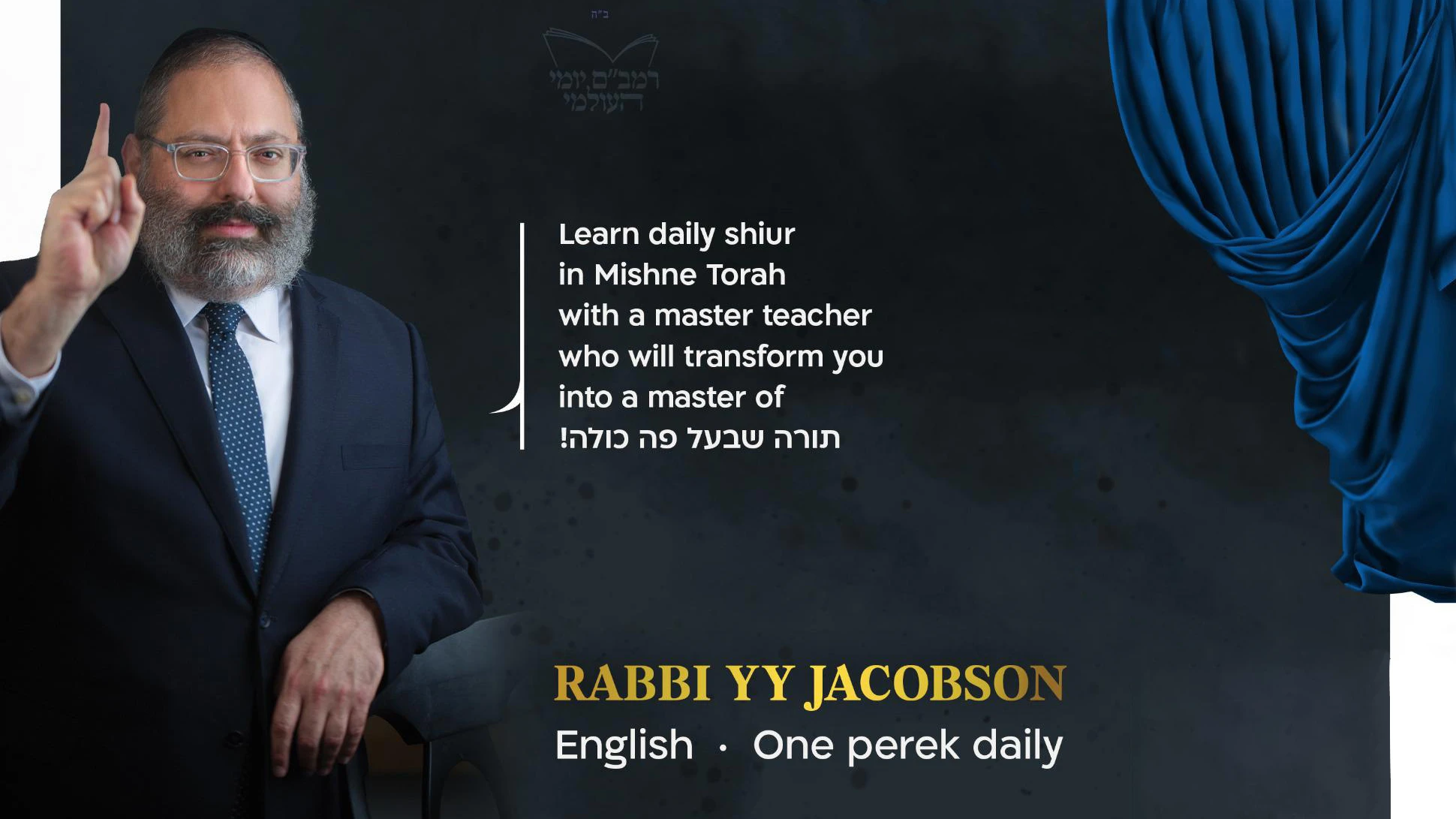
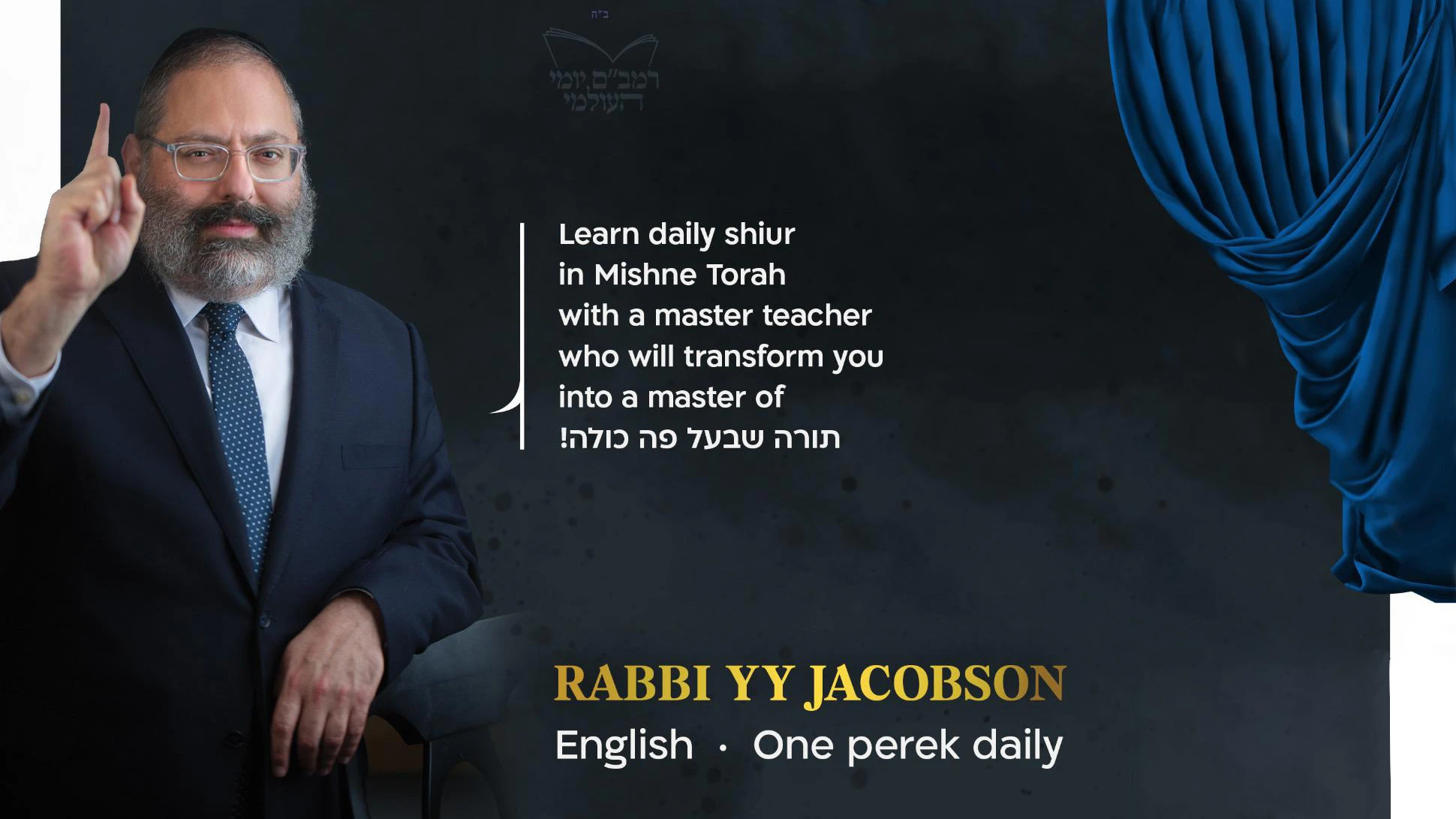
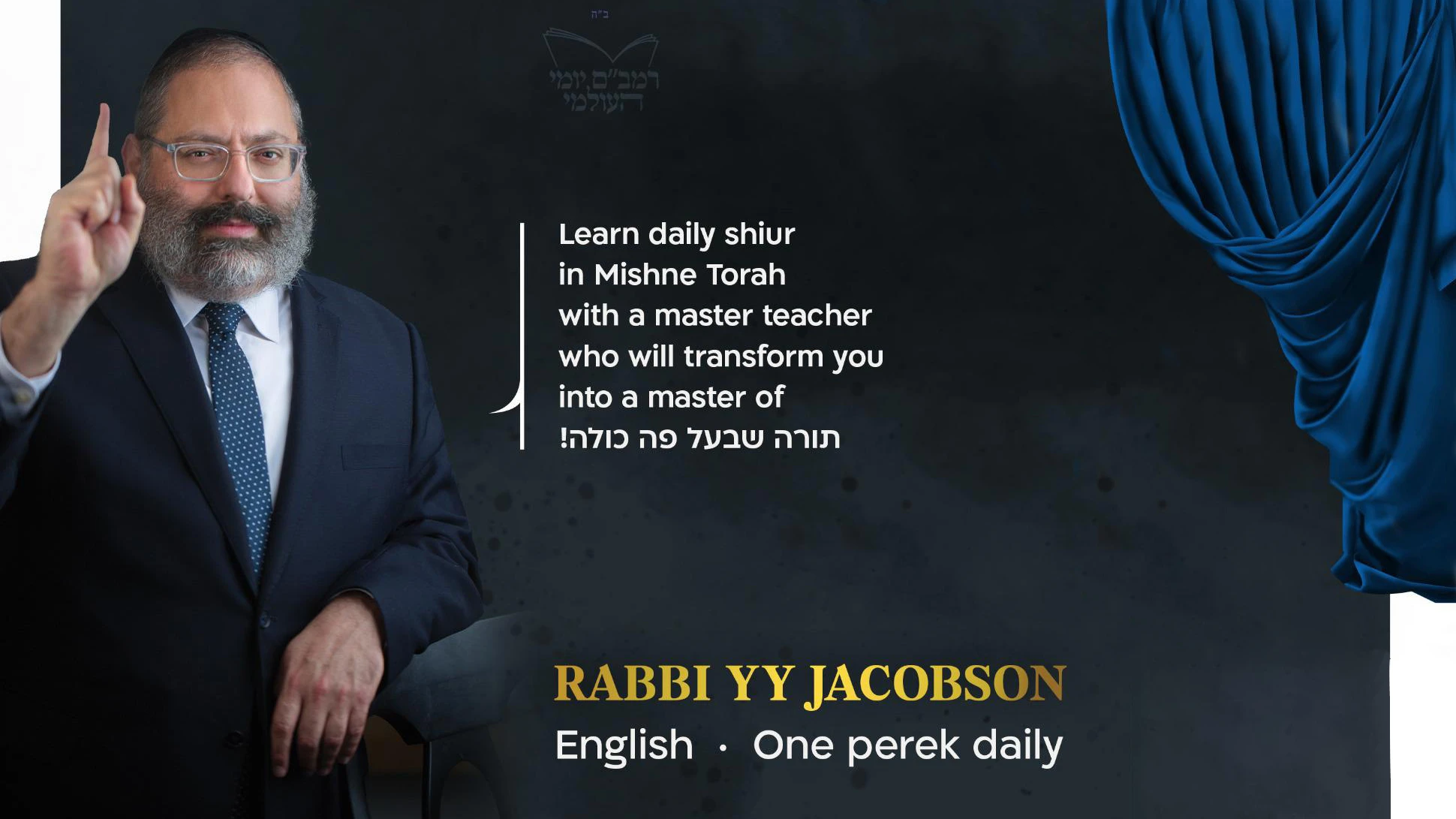
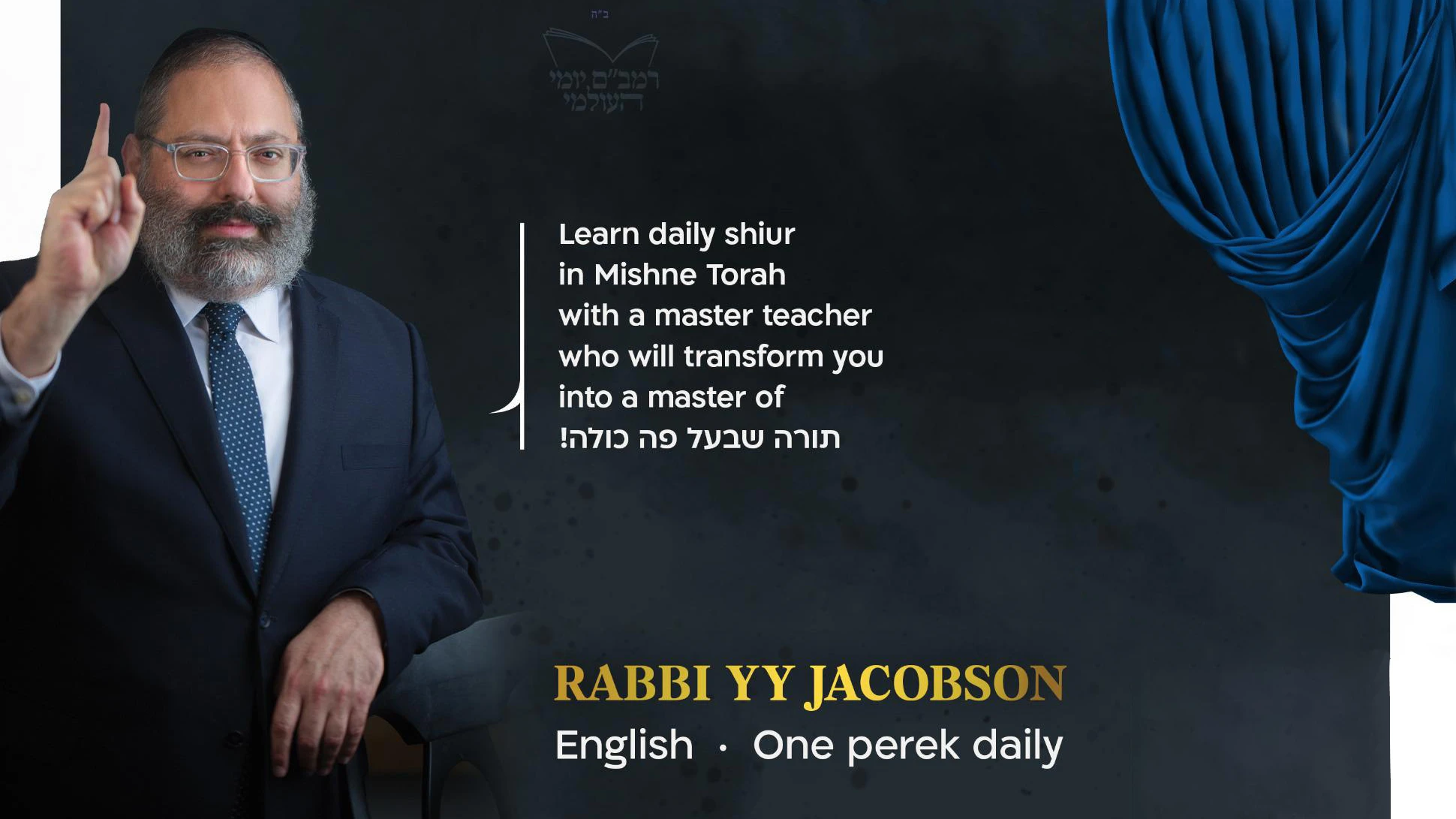
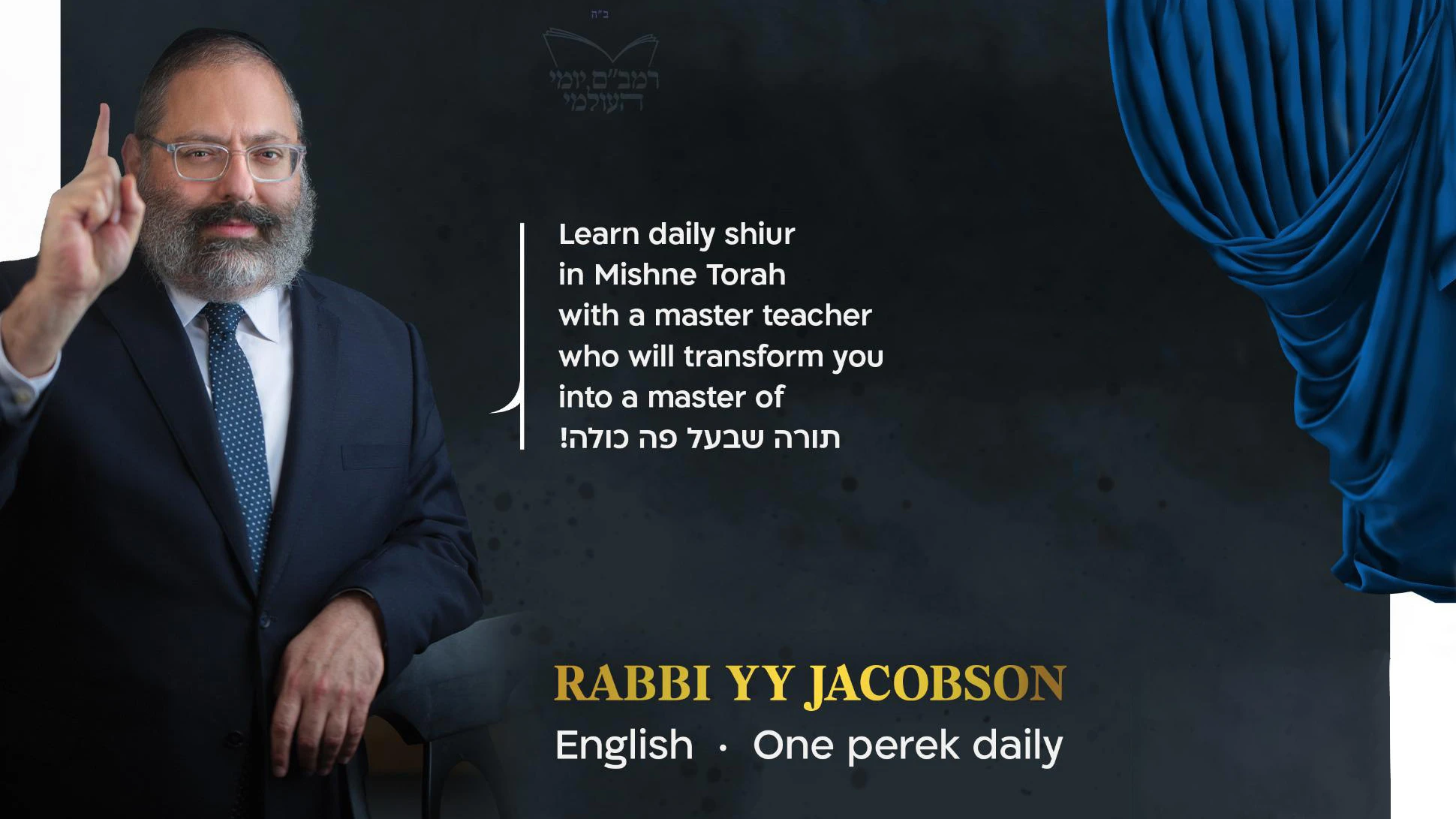
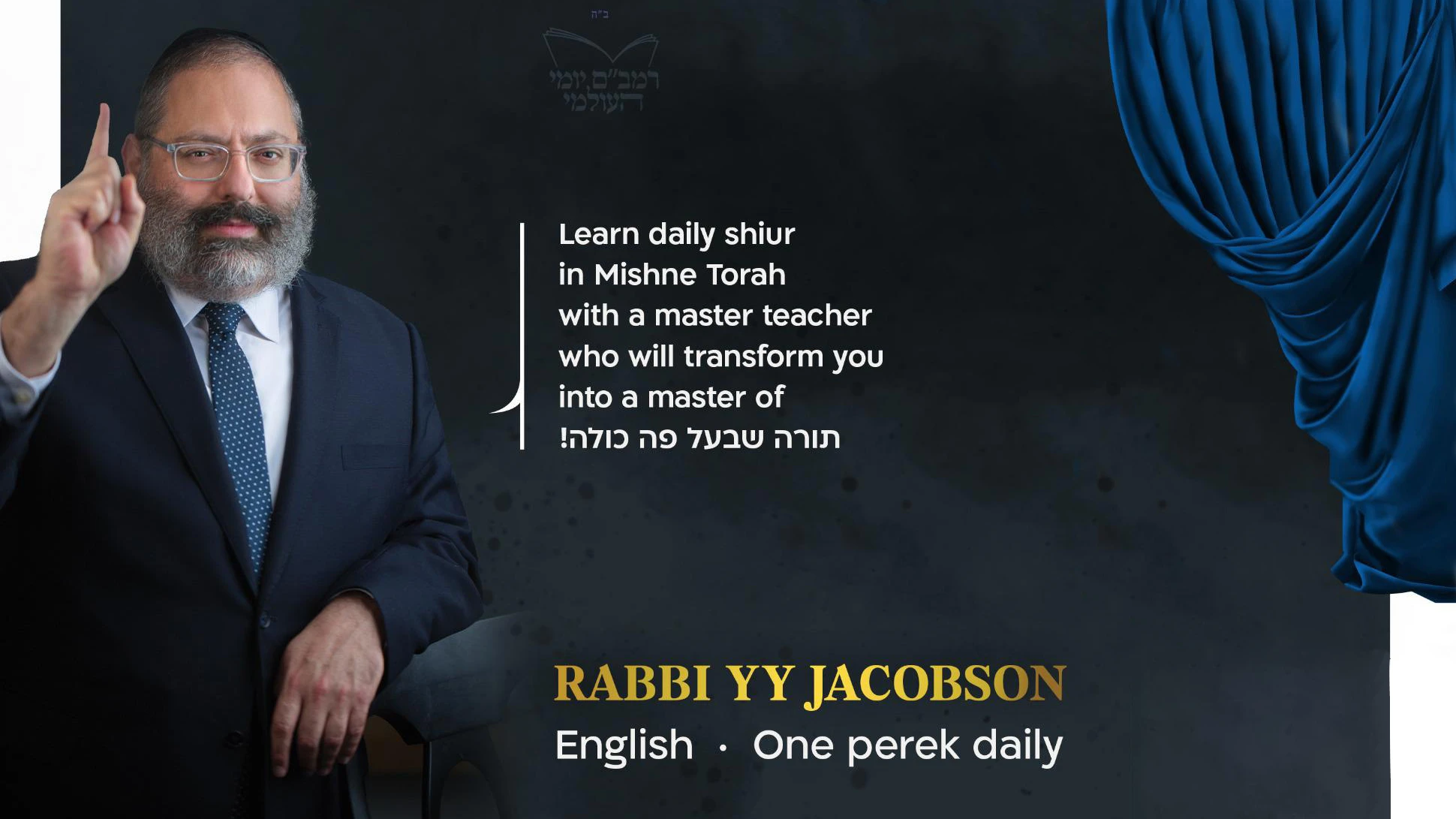

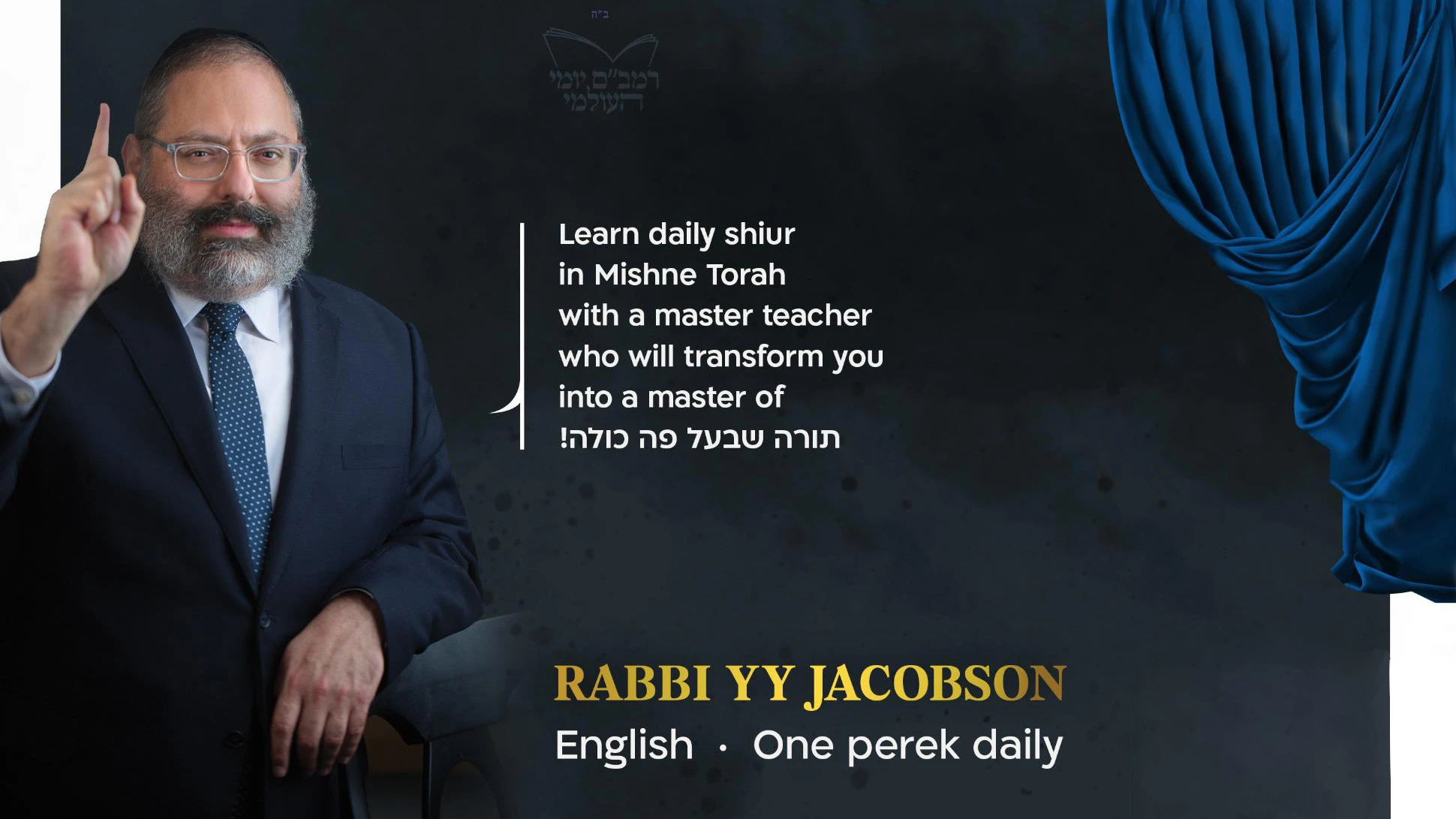
Please leave your comment below!
Shloime -4 years ago
What happened to all the people Avraham brought closer to HaShem? They seem to have gotten lost...
Based on your last point of Avraham's avoda being a manifestation of chesed and Yitchak's of gevura, one can understand what happened to all the souls Avraham brought closer to Hashem, ואת הנפש אשר עשו בחרן.
I once saw, in the sefer שיח שרפי קודש, a facsinting explanation from the Rebbe R' Heinich of Alexander.
After Avrohom's passing, Yitzchok became his successor. When his disciples saw how his derech in Avodas Hashem differed from that of his father, they felt that Yitzchok must be mistaken and left him. They didn't understand that everyone has his derech in avoda, and belived that Yitzchok was not serving Hashem in the correct way. Once they left him, and no longer had a Rebbe, they slipped away. They got lost. That is why there are no further mentions of these souls in the Torah.
Reply to this comment.Flag this comment.
Dr. Heshie Klein -4 years ago
Question for Rabbi YY
Reply to this comment.Flag this comment.
Z Ginsburg -4 years ago
Question for Rabbi YY
Reply to this comment.Flag this comment.
Anastasia -4 years ago
Question for Rabbi YY
Reply to this comment.Flag this comment.
Dr. Heshie Klein -4 years ago
Hilchos Talmud Torah, Chapter 7 - The Mystery of the Missing Halacha Ches
I believe that the second paragraph of Halacha 7 is actually a Moredicke halacha unto itself.
In paragraph 2 of halacha 7, the Rambam says, “v’yeish l’talmid l’hatir ha’nedui oh ha’chereim v’afilu bi’m’kom ha’rav’ – ‘A student may release a person from a ban of ostracism of excommunication even in the place of is teacher.”
We have all, most likely, heard the expression, “Put yourself in my place.” What does that mean?
“Try to see things from my perspective and see how you would feel.” It means “feel my pain and my suffering.”
Imagine what it feels like to be under a nidui or a cheirem, and to not be able to find someone who can remove it, release him from it . . . imagine that pain.
It is very easy to paskin by the book. It is much more difficult to also understand the issue behind the question.
A local Jew came to Rabbi Yosef Dov Soloveichik with a strange question. "Is it permissible to use four cups of milk at the seder instead of four cups of wine?"
Understanding that this was an issue of finances (not health or any other reason), the Rabbi, without even responding, reached into his pocket and told the person "Take these twenty rubles and purchase wine."
After the Jew had left, a student asked the Rabbi, "Why did you have to give him twenty-five rubles? Five would be more than enough to purchase the required amount of wine."
Rabbi Soloveichik answered, "If he intended to use milk at the Seder, that means he also doesn't have money for meat [For Jewish law forbids having milk and meat at the same meal], and he probably also doesn't have money for the other items served at the Seder. I wanted to give him enough so that he could have a complete Seder." Rabbi Soleveichik understood the “soul” of the question.
If a woman loses a child, chas v’sholom, and while she is sitting shiva, people come and try to console her with many platitudes, such as, “think of the future”, or “It was his time” or “It’s Hashem’s will”, etc., none of which make her feel any better.
Then another woman enters, a woman who also lost her child. As soon as that woman enters the room, the mother who just lost her child begins to feel nechama, and this woman sits down next to aveila, and says nothing. The women cry together and the mother is consoled. This woman is called a “ben geelo,” or perhaps a “bas geelo”.
In each of these cases, one feels the pain and suffering of the other. Rabbi Yosef Dov Soloveichik and the woman who also lost a child, were both empathetic.
“Immo Anochi B’Tzara” (Tehillim 91)
Besides meaning “in front of his Rav, I think the Rambam is saying something more powerful. Bi’m’kom haRav besides meaning in front of his Rav, bi’m’kom HaRav also means putting himself “IN THE PLACE” of his Rav, i.e – if the student is so close to his Rebbi that he can feel his Rebbi’s pain of being under a nidui or a cheirem, unable to find someone who can release him from it, who can remove it,
that he can be in his place, that he can be empathetic, and it becomes “Immo Anochi B’Tzara”, THEN the student can be mahtir the nidui or the cheirem, not just bi’m’kom haRav, in front of his Rav, rather bishvill haRav – on his rav’s behalf.
The Rambam is telling us that in order for a student to be able to be mahtir a nidui or a cheirem on his Rav, he has to be bi’m’kom haRav, he has to “be” in his Rav’s place, he has to feel the Rav’s pain, he has to be Immo Anochi B’tzora.
Afilu bi’m’kom haRav , means even in front of his Rav, but it also means that he can only be mahtir the nidui or the cheriem if he is bi’m’kom haRav, if he can put himself in the Rav’s place, if he can feel his Rav’s pain.
That being the case, it explains why there is no Halacha Ches, because the Rambam felt this was such a powerful and important point, that he actually wrote the second paragraph as a separate halacha, but somehow, someway, over time, the letter ches that that Rambam originally designated that paragraph as, somehow the “ches” got deleted, and halacha ches ended up looking like it was the second paragraph of halacha zayin (7).
Reply to this comment.Flag this comment.
Moshe -4 years ago
What happened to the many followers of Avraham?
maybe those are the "mixed multitude" who departed Egypt with the yidden? Maybe they are tge geerim throughout history who had a deep inexplicable affinity to Yiddishkeit?
Reply to this comment.Flag this comment.
Kaila C Stempel -4 years ago
Question for Rabbi YY
Reply to this comment.Flag this comment.
Daniel Davidov -4 years ago
Question for Rabbi YY
Reply to this comment.Flag this comment.
Moshe -4 years ago
I believe the Torah codes show that "wood" refers to him who was crucified on wood, and "stone" refers to him whose horses hoof leaped with him to heaven after jumping off the stone situated on the site of the Beis Hamigdash.
Reply to this comment.Flag this comment.
Moshe -4 years ago
"Wood and stone". What about metal, gold, etc.?
I believe the Torah codes show that "wood" refers to him who was crucified on wood, and "stone" refers to him whose horses hoof leaped with him to heaven after jumping off the stone situated on the site of the Beis Hamigdash.
Reply to this comment.Flag this comment.
Anonymous -4 years ago
NO SOUND
no sound...again
Reply to this comment.Flag this comment.
Moshe -4 years ago
The Rambam says that Avraham had no teacher and was first
But didn't Hashem's Truth and the tradition he gave to Adam and Noach exisr among a small number of people even before Avrahsm? Didn't the yeshiva of Shem and Ever exist before Avraham? Why didn't Avraham, being self taught, just go and be a rosh yeshiva there? Surely he was the first to publicize it on his Chabad House, but that doesn't make him the first monotheist.
When Rivka had a shayle about her pregnancy she didn't go to the shver, but went to the yeshiva of Shem and Ever.
Reply to this comment.Flag this comment.
Moshe -4 years ago
The priests of Avoda Zora convinced the people
If this convincing was before Mattan Torah then its easy to understand how they were duped. Even modern day people people have been duped by those who claim a divine encounter and having been given a message abd a mission (e.g. Mormons). The fraudster gave good arguments to people thirsty for spirituality. Very few people before Avraham had a tradition of monotheism, and until Mattan Torah only Avrahams descendents and the students of Shem and Ever had that tradition. The rest humanity was susceptible to avoda Zora.
After Mattan Torah to convince people of the veracity of a particular avoda Zora was harder but still doable and became easier the more time went by after Mattan Torah.
Mattan Torah itself has very very strong logical and historical proof of veracity. And a strong mesorah. Not so Judaism's wholly owned subsidiaries, spinoff and all other false religions and avoda Zoras. Any attempt to prove veracity of other religions or of avoda zora falls woefully short to an honest intelligent mind..
But Judaism is onerous ("shver tzu zayn a yid") and people are often looking for the easy way out. "Believe in me, or worship like this and you'll get paradise". So many flocked to these spinoffs and avoda Zora, even some yidden.
Reply to this comment.Flag this comment.
Moshe -4 years ago
how could the idol worshippers be so stupid?
It is easy for us to question the idol worshippers of yore and wonder how they could be so stupid.. It is hard to imagine a tayve for Avoda Zora.
I have learnt the Rabbis recognized this strong tayve by the masses and somehow collective beat back that particular aspect of the yeytzer hora. So much so that it seens stupid to us today. Of course we now have other tayves that they might have considered stupid.
A principal appoints a shaliach. The shaliach has many of the powers of the principal and can act in his steady. But it is an error to say the agent IS the principal. The agent can be dismissed at any time. The agent only has the limited powers delegated to him.
The error of Avoda Zora was simply ascribing to agents the gull power of the principal. Understandable actually, especially when the agent is visible and tangible and the principal is invisible and intangible.
Reply to this comment.Flag this comment.
Moshe -4 years ago
The questions from yesterday
were never gotten to. GS
Reply to this comment.Flag this comment.